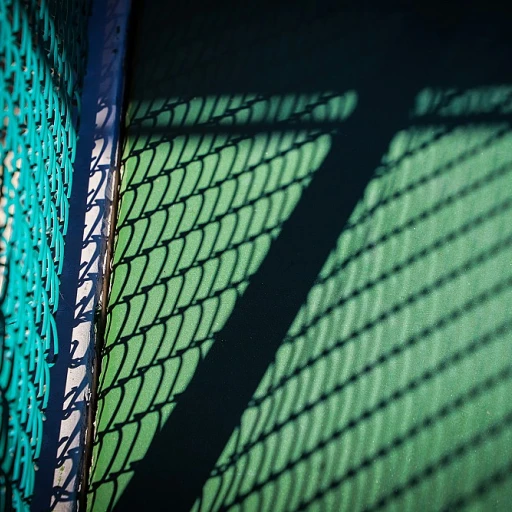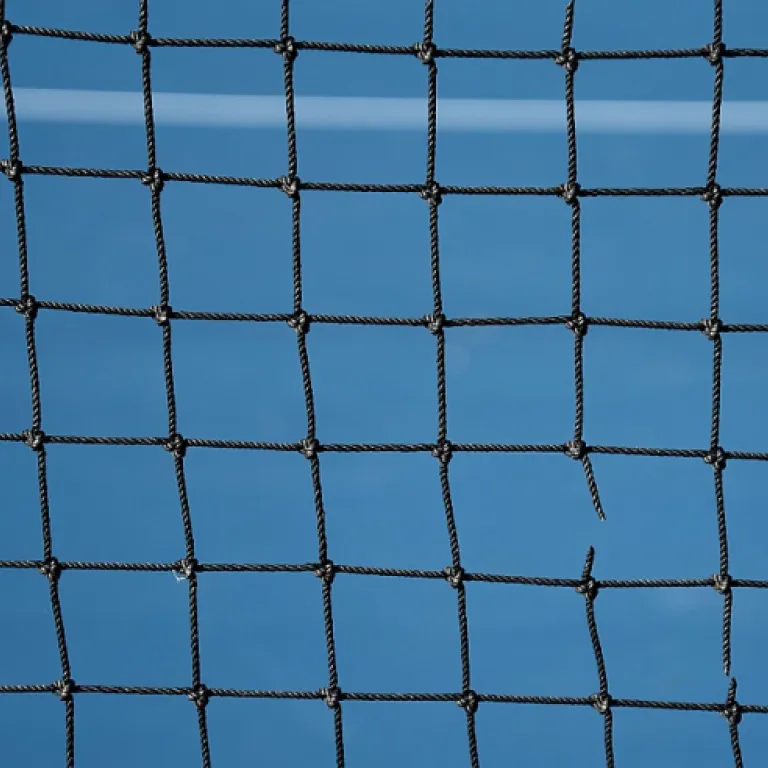Introduction to Pickleball Rules
{"
Getting Acquainted with the Basics
": "Pickleball is a fast-paced and engaging paddle sport that combines elements of badminton, tennis, and table tennis. To fully enjoy this game on the court, players must adhere to a specific set of rules that govern every serve, volley, and point. These rules not only facilitate fair play but also enhance the strategic elements of the game. For newcomers, understanding the essential rules such as serving techniques and court layout is crucial.
Delve into 1v1 pickleball rules to get more acquainted with foundational play dynamics and elevate your game experience.
The serve, a pivotal part of initiating play, must be executed with precision, ensuring the ball bounces once in each side’s court before a volley can happen. This fundamental is crucial in understanding the flow of the game and plays a significant role in extending rallies during match play. The serving team's primary objective is to strategically place the ball, creating an early advantage, while the receiving team focuses on returning the serve to gain control.
In this sport, it's essential for players to comprehend the strategic importance of the double bounce rule, which dictates the first few exchanges after the serve. Mastering these components as part of the broader game rules can significantly impact match outcomes and player development. Embracing these basics sets the stage for learning more detailed regulations like the double bounce and expands one's skills across various gameplay scenarios.
What is the Double Bounce Rule?
The Double Bounce Rule Explained
In pickleball, one of the foundational rules that players must be mindful of is the double bounce rule. This rule is integral to the dynamics of the game, shaping the flow of play and influencing strategic decisions made on the court. Understanding this concept is crucial for both beginners and seasoned players looking to excel.
The double bounce refers to the necessity for the ball to bounce once on each side of the net before any volleying can occur. During the serve, the serving team hits the ball to the receiving team, and the ball must bounce once on the receiver's side (receive a bounce) before being returned. The subsequent return shot must also bounce once on the server's side (bounce returning) before players can engage in volleys. This sequence of bounces ensures that the game starts with longer rallies, leveling the playing field between teams.
The rule implements a fundamental layer of strategy into the game, requiring teams to anticipate each bounce and adjust their positioning accordingly. This phase of play encourages thoughtful shot placement and positioning, allowing both teams—serving and receiving—to develop strategic advantages as they attempt to gain an upper hand.
The implementation of the double bounce rule is essential in maintaining the intended pacing and fairness of pickleball, ensuring that players of all skill levels can compete effectively. Keeping in mind the nuances of this rule, such as anticipating the second bounce on the server's side, is pivotal for teams aiming for consistent execution and point scoring opportunities.
For additional guidance on managing this rule and its impact on serving and rally strategies, check out this
guide to keeping score.
Impact on Gameplay
Influence on Activating Points and Match Strategy
The Double Bounce Rule in pickleball, often misunderstood by novice players, plays a pivotal role in shaping game strategy. This rule dictates that the ball must bounce once on each side before volleys are allowed. It ensures longer rallies and strategic play, prolonging each interaction and testing players' reflexes.
As the serve initiates play, the serving team cannot immediately smash the ball back if returned directly. This necessity for two bounces—first on the receiving side, then back on the serving side—changes the dynamics and demands a deeper understanding of the game mechanics, compelling players to shift quickly between offense and defense, analyzing opponent movements before striking.
For the receiving team, it offers an opportunity to return the ball strategically. By forcing players to anticipate the ball's bounce and position themselves accordingly, it paves the way for enhanced shot placement. This encourages tight control and precision, as the initial return followed by the enforced bounce on the serve return often sets the stage for the unfolding volley sequence.
Understanding this mechanism is crucial for developing tournament-worthy skills. By engaging with the double bounce rule, the game of pickleball transforms from a simple net sport into a tactical engagement, requiring both power and finesse. Additionally, the enforced delay tends to level the playing field, making it an appealing sport for a broad audience of varying skill levels.
For further exploration of strategic pickleball insights, consider learning from the impact of evolved tactics seen in modern play.
hereCommon Mistakes and How to Avoid Them
Avoiding Frequent Errors and Elevating Your Game
Understanding the nuances of the double bounce rule is crucial for players looking to refine their strategy and gameplay. While it seems straightforward, mistakes can easily creep into a player's performance, leading to missed opportunities or penalties.
- Rushing the Serve Return: Often, the receiving team falls into the trap of rushing the return shot. Remember, the ball must bounce on both sides of the court before any volley can occur. Taking a moment to time the serve return allows players to avoid premature volleys.
- Premature Volleys: Many players instinctively volley the ball after the first bounce, especially in high-stakes situations. However, the pickleball double bounce rule mandates that the receiving and serving teams must each allow a bounce before volleying.
- Misjudging the Bounce: Sometimes, players misjudge the ball bounce, leading to a forced play that results in errors. It’s vital to observe where the ball is likely to land and prepare accordingly, prioritizing firm footwork and strategic positioning.
To effectively reduce the chances of these errors, practice is essential. Regularly engage in drills that focus on the nuance of the bounce rule, thereby developing an acute sense of timing and court awareness. Not only does this help in adhering strictly to the rule pickleball demands, but it also builds a formidable habit that can be a pivotal element in strategic play. Investing time in understanding and practicing this rule will lead to smoother play and longer rallies on the side court, enhancing overall game proficiency.
Training Drills for Mastery
Mastering the Technique: Perfecting Training Drills
To become proficient in pickleball, especially in mastering the nuances of the double bounce rule, consistent practice is essential. Training drills are an excellent way to reinforce rule understanding and gameplay tactics.
One effective drill is to focus on the serve and serve return. Emphasize the significance of letting the ball bounce on both the serving and receiving sides by practicing controlled serves. Set up scenarios where the receiving team intentionally allows the ball to perform a second bounce to hone this technique.
Consider practicing ground shots that promote strategic ball placement. When the server initiates play, have a partner ready to return the shot with a deliberate bounce. Transition this practice into a realistic game play situation where players can tactically decide when to move forward into the volley zone after ensuring compliance with the bounce rule.
Reinforcing ball bounces during these drills can help players instinctively react correctly in matches, avoiding common errors associated with double bounces. It also provides a valuable opportunity to work on longer rallies, improving overall game dynamics and player agility.
Teams should coordinate during their practice sessions to switch roles between serving team and receiving team. This repetition not only enhances technical skills but also solidifies a team's ability to predict and counteract opponents’ moves in a live game scenario. By intentionally integrating these exercises into regular practice, players develop a heightened sense of gameplay rhythm and rule adherence that pays dividends on the court.
Expert Insights and Opinions
Insights from the Experts on Mastering the Double Bounce Rule
When it comes to mastering pickleball, understanding and effectively implementing the double bounce rule is crucial. Experienced players and coaches emphasize its strategic importance in the game. Here's a closer look at their expert recommendations:
- Strategic Advantage: The double bounce rule is not merely a rule to follow; it offers a strategic advantage that players can leverage during rallies. By requiring the ball to bounce on each side after the serve and the return, the rule prevents immediate volleys, thereby promoting longer rallies and strategic play.
- Patience and Positioning: Veteran players advise focusing on patience and positioning. Proper court positioning allows both the serving team and the receiving team to anticipate the second bounce, setting the stage for a calculated shot that could put the ball in an advantageous side court area.
- Volleys and Shot Selection: Players are encouraged to diversify their shot selection post the initial ball bounces, oscillating between defensive lobs and offensive volleys. The bounce rule necessitates this adaptability, as it prohibits immediate aggressive play like serve volleys.
- Practice with Purpose: Coaches suggest drills that simulate real-game scenarios involving the double bounce. These drills help players get accustomed to the rhythm and flow of the game while reinforcing the importance of fulfilling the bounce rule.
By incorporating these insights, players can enhance their understanding of the double bounce rule and its impact on their overall pickleball strategy. For those looking to refine their skills further, focusing on the nuances of this rule can serve as a critical step in elevating their gameplay.

